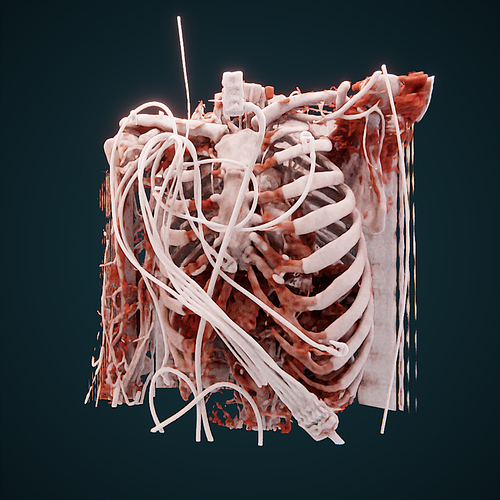Thank you Andras for the interesting challenge and for providing the sample data ( is this data free ? can I reuse it ? ).
Here follows the best result I achieved using your data and Paraview, probably it is possibile to do better but my knowledge of Paraview is limited
The next Image is my best result using volume rendering on Blender, with a very simple light setup

This is the shader-network I used
and this is the same, with some tweaking from a friend of mine (thanks Daniele).
Here is the Blender file and the data converted in openvdb
My personal conclusions:
- Matching the quality of the CTA-cardio-cinematic was not possible, but that image was created from a dataset of an higher quality (see for example the details on the surface of the bones ).
- Using Paraview you can reach a very good level of quality in short time, even with a limited knowledge of the tool.
- Using Blender you can probably go further, but you need a knowledge of the tool and is time consuming.
Beyond the challenge, we presented here VtkNodes not to compete against the Kitware tools, but to let you know that Blender and Vtk can play together nicely. Maybe a more interesting scenario for using VtkNodes is for people developing custom application requiring surface editing tools ( e.g. dental implant, ad-hoc prosthesis planning …) those tools are missing in Vtk by design, while there are a plenty of them in Blender. Using VtkNodes you can import your data in Blender, transform it in a blender mesh, use any of the tools provided, re-convert the data to VTK and export it, and all of this using only free applications and addons.
– Silvano


